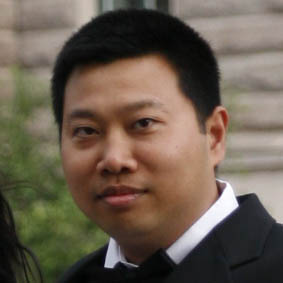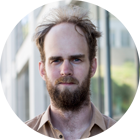Novel image inversion algorithms based on Doppler measurement for security and climate monitoring
Novel image inversion algorithms based on Doppler measurement for security and climate monitoring
Project status
Ongoing
Project Manager
Category/Area
Research in Systems Engineering
Radar and radar-like instruments are increasingly used in our society to make light and weather-independent imagery. The applications are many and they are used e.g. to study climate change and to monitor various conflict areas on your world. In this research project, we improve performance in these systems. In particular, we focus on systems that use Doppler to generate high resolution. The instruments we focus on are Radio Occultation Instruments and Synthetic Apertur Radar and the applications are e.g. to improve weather measurements in the atmosphere and the ability to detect changes occurring on the ground in connection with human activity.
The modern society is facing many challenges for the future such as climate change, extreme weather and security conflicts between people, groups or even nations. One of the most important ways to monitor these challenges on the Earth is by remote sensing instruments. Remote sensing instruments are sensors placed on satellites or airplanes and far away from the studied object. Today there are many different remote sensing instruments placed in space to monitor e.g. weather, climate or security related issues. The investment made in the remote sensing field is increasing rapidly every year.
One area where there has been a large increase in investments is active radio wave instruments e.g. radar with many new systems launched to space or operated on aircrafts. Radio waves sensors have the benefit that they can monitor the Earth independently of weather or daylight. In this area Sweden has a strong position with internationally recognized companies and two of them are partners of this project, namely RUAG Space and Saab Electronics Defense System. Another project member is Swedish Defence Research Agency (FOI) that has a large interest in this area. In this project novel high precision radio wave Doppler imaging techniques will be developed. The principal of radio wave Doppler imaging has been used in a large variety of sensors like radar and sonar while the aim of this project is to develop new inversion algorithms for image determination in Radio Occulation (RO) and Synthetic Aperture Radar (SAR). The invented algorithms will provide better performance using self-controlled, adaptive or even cognitive algorithms in combination with the Doppler imaging processes. The project will focus on algorithms for one dimensional Doppler imaging like RO and two dimensional Doppler imaging like SAR. The outcome will be better quality images of the atmosphere, the Earth surface and better performance in change detection. RO instrument makes images of the metrological properties of the atmosphere whereas SAR makes images of the ground. At the companies there are unique competences in one and two dimensional Doppler imaging algorithms and at BTH there is a unique competence in two dimensional imaging in combination with adaptive array signal processing. Such competences will be needed to ensure the success of the project and integrate the current research and development of BTH and the companies into the future research areas like adaptive or even cognitive sensors.
The research group formed by the experienced researchers at Saab, RUAG Space, FOI and BTH can be considered as an internationally very strong research group. Seven of the eight project members have Ph.D. degrees and three are actually professors. The group has in the past made many inventions and has also published a large number of scientific publications. This is also warranty of the success of the project.
The modern society is facing many challenges for the future such as climate change, extreme weather and security conflicts between people, groups or even nations. One of the most important ways to monitor these challenges on the Earth is by remote sensing instruments. Remote sensing instruments are sensors placed on satellites or airplanes and far away from the studied object. Today there are many different remote sensing instruments placed in space to monitor e.g. weather, climate or security related issues. The investment made in the remote sensing field is increasing rapidly every year.
One area where there has been a large increase in investments is active radio wave instruments e.g. radar with many new systems launched to space or operated on aircrafts. Radio waves sensors have the benefit that they can monitor the Earth independently of weather or daylight. In this area Sweden has a strong position with internationally recognized companies and two of them are partners of this project, namely RUAG Space and Saab Electronics Defense System. Another project member is Swedish Defence Research Agency (FOI) that has a large interest in this area. In this project novel high precision radio wave Doppler imaging techniques will be developed. The principal of radio wave Doppler imaging has been used in a large variety of sensors like radar and sonar while the aim of this project is to develop new inversion algorithms for image determination in Radio Occulation (RO) and Synthetic Aperture Radar (SAR). The invented algorithms will provide better performance using self-controlled, adaptive or even cognitive algorithms in combination with the Doppler imaging processes. The project will focus on algorithms for one dimensional Doppler imaging like RO and two dimensional Doppler imaging like SAR. The outcome will be better quality images of the atmosphere, the Earth surface and better performance in change detection. RO instrument makes images of the metrological properties of the atmosphere whereas SAR makes images of the ground. At the companies there are unique competences in one and two dimensional Doppler imaging algorithms and at BTH there is a unique competence in two dimensional imaging in combination with adaptive array signal processing. Such competences will be needed to ensure the success of the project and integrate the current research and development of BTH and the companies into the future research areas like adaptive or even cognitive sensors.
The research group formed by the experienced researchers at Saab, RUAG Space, FOI and BTH can be considered as an internationally very strong research group. Seven of the eight project members have Ph.D. degrees and three are actually professors. The group has in the past made many inventions and has also published a large number of scientific publications. This is also warranty of the success of the project.


